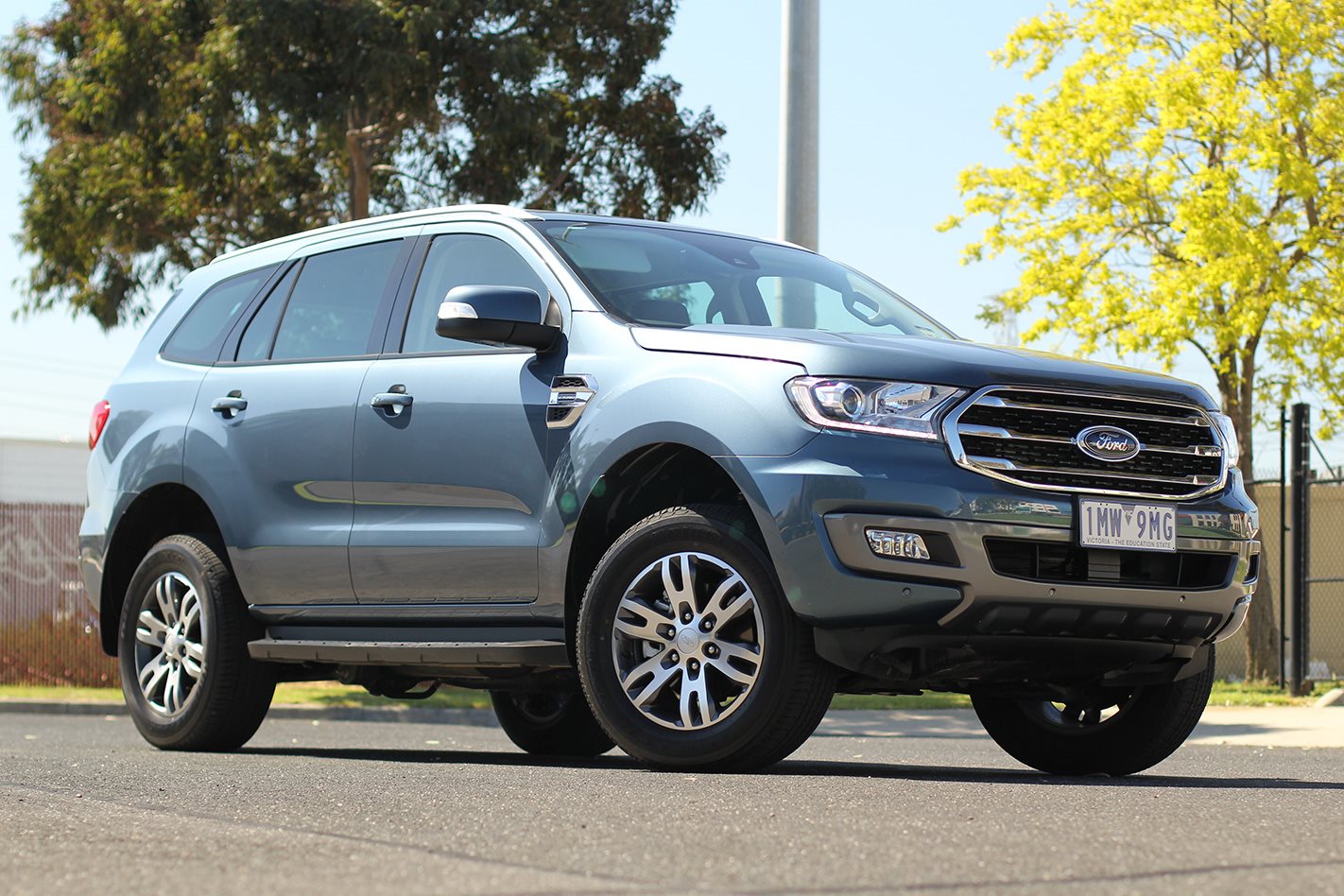
We wouldn’t blame you for thinking that a hulking SUV wagon based on a commercial ute would be a little too agricultural for family work, but the Ford Everest actually works better in that role than you might expect. Now available with an efficient 2.0-litre twin-turbo diesel, the Everest has a lot to offer Aussie families – and for those that rarely venture into challenging off-road scenarios, the mid-strength Trend RWD variant we have here sits right in the sweet spot.
VALUE
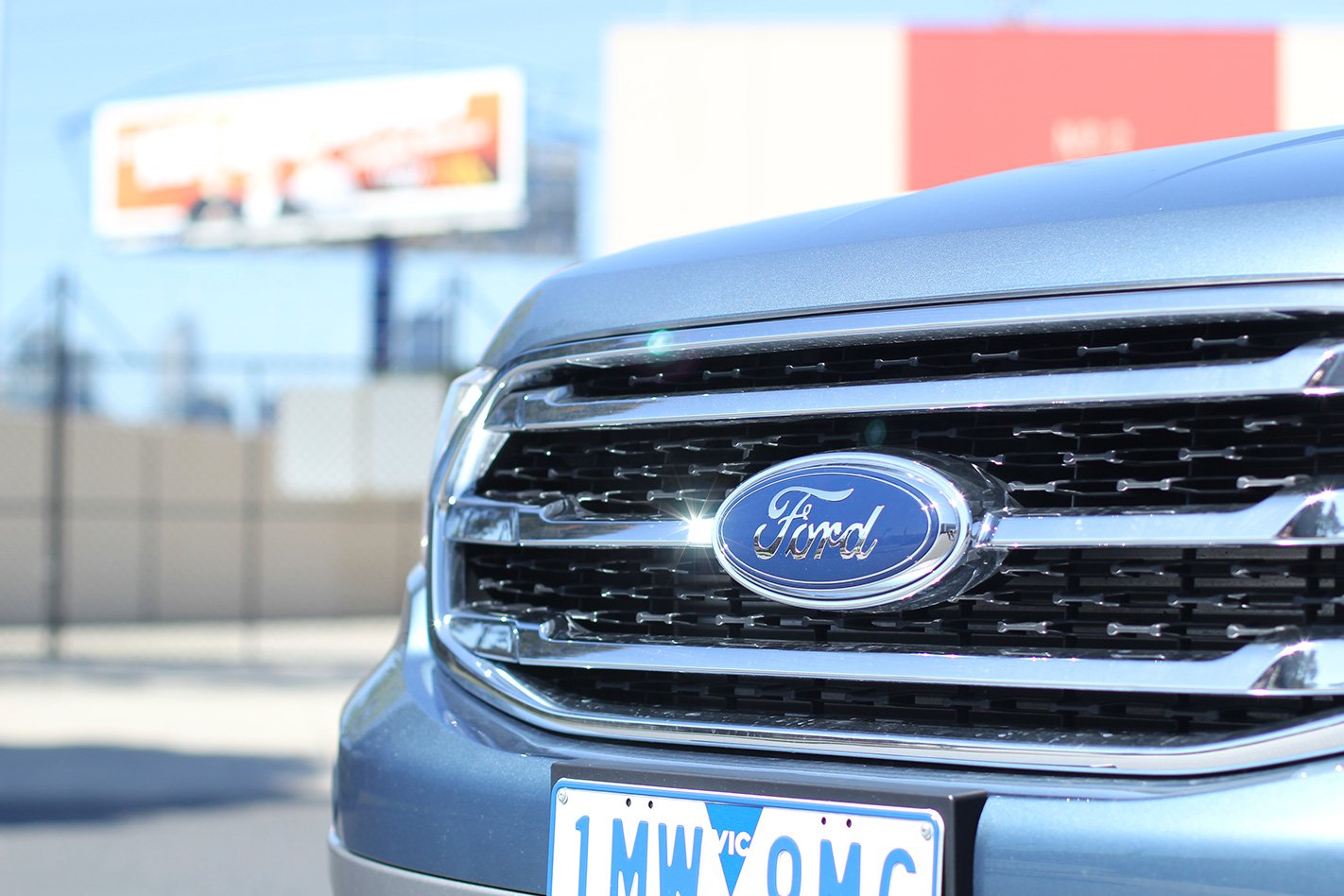
At $56,190 before on-roads, the Everest Trend RWD is, superficially speaking, not especially great value against its key rivals. Similarly-positioned competitors like the Toyota Fortuner GXL, for example, retails for $54,990, while the Mitsubishi Pajero Sport Exceed and Holden Trailblazer LTZ cost $53,000 and $52,490 respectively. All of them come standard with 4WD as well, something that comes at a $5000 premium on the Everest Trend.
However, none of those cars can equal the Everest’s 6.9L/100km fuel economy figure, nor its 157kW peak power output and 3100kg tow capacity. Those metrics are the ones that set the Everest apart from its competition, and are no doubt attractive numbers for those looking to tow or tour.
STANDARD FEATURES
The Trend grade sits in the middle of the Everest’s model hierarchy, but it’s specified to a level that’s on par with flagship versions of the Fortuner, Pajero Sport and Trailblazer. Standard features include mod-cons like keyless entry and ignition, leather upholstery, dual-zone climate control, a pair of 4.2-inch reconfigurable colour displays in the instrument panel, a powered tailgate, self-levelling HID headlamps with auto high-beam, rain-sensing wipers and a power-adjustable driver’s seat.

Front and rear parking sensors are also standard, along with rear privacy glass, a self-dimming rear view mirror and adaptive cruise control. It’s built for long-distance touring too, with plenty of USB and 12-volt power outlets to keep your passenger’s devices charged up. There’s even a 230-volt household power outlet on the rear of the centre console for plugging in accessories like portable fridges and the like.
Satellite navigation is also standard, displayed through an 8.0-inch colour touchscreen that also controls the 10-speaker, digital radio-equipped audio system. Smartphone mirroring via Apple CarPlay and Android Auto is standard too, equalling the Trailblazer and Pajero Sport, and giving the Everest a leg-up on the Fortuner’s infotainment package.
SIZE
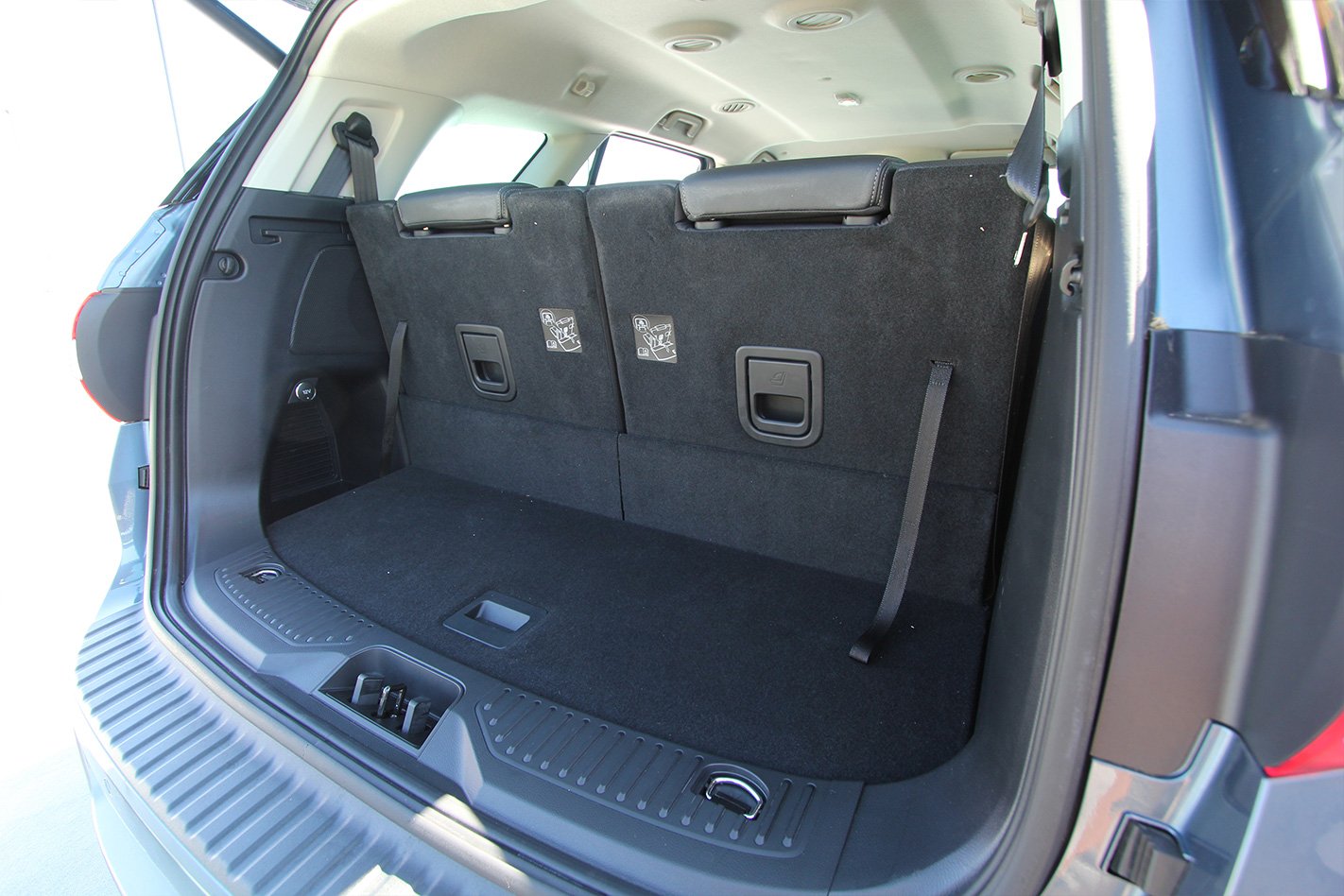
Based on the Ranger, the Everest boasts generous proportions both outside and in. Its total length of 4.9 metres and width of 1.87 metres gives it a bigger footprint than its core competitors.
And that not only translates into heaps of passenger space across all three rows, but also a sizable luggage capacity. With all three rows raised there’s 450 litres of cargo room between the roof and floor, while keeping the rearmost row stowed gives a massive 1050L up to the roof. Fold down both the second and third rows, and you can store 2010L of cargo in the huge area behind the front seats.
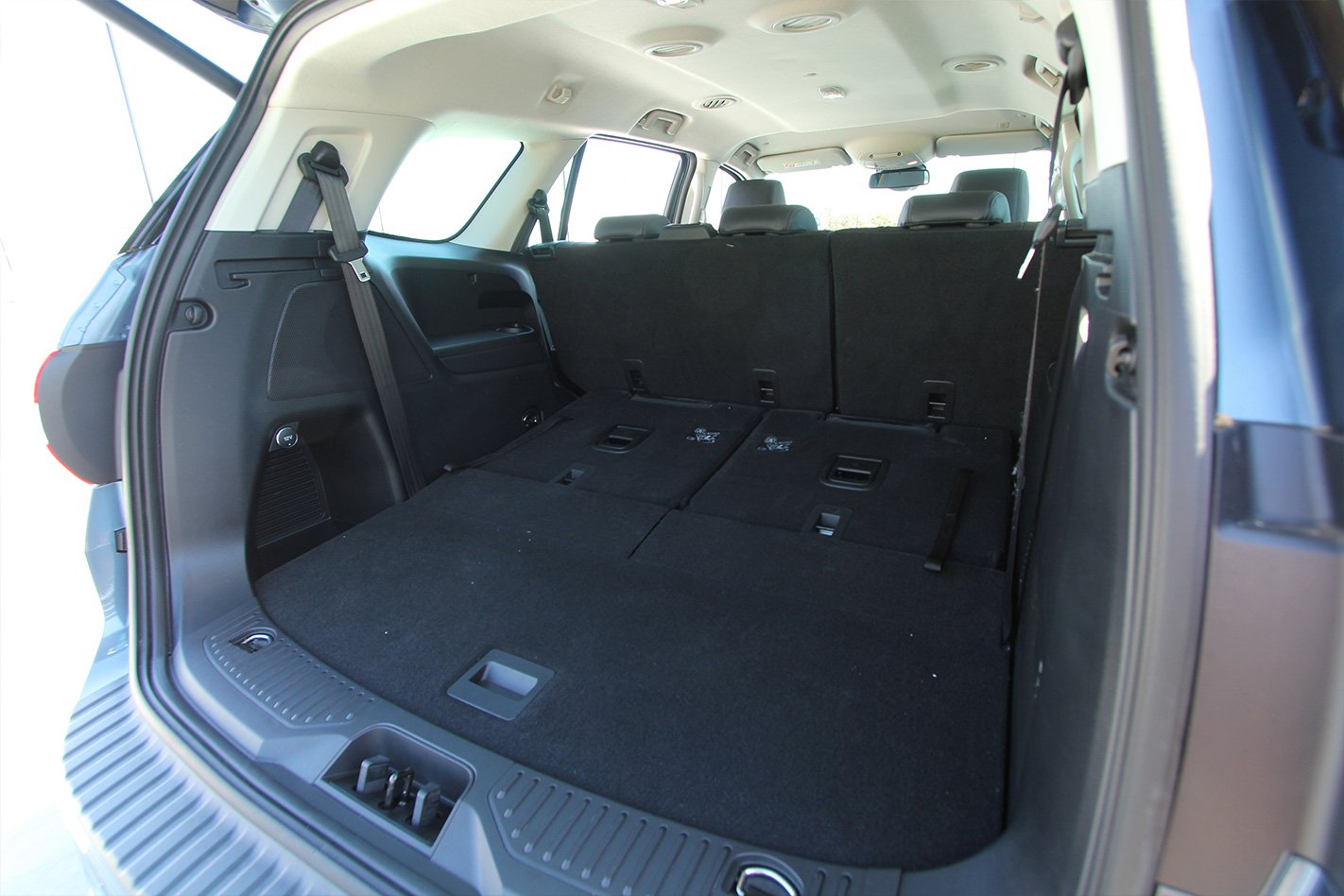
SAFETY
The Everest Trend’s safety fit-out is good, with Autonomous Emergency Braking, pedestrian recognition, traffic sign recognition and lane keep assist all working to help keep you on the right side of the law – and the right side up.
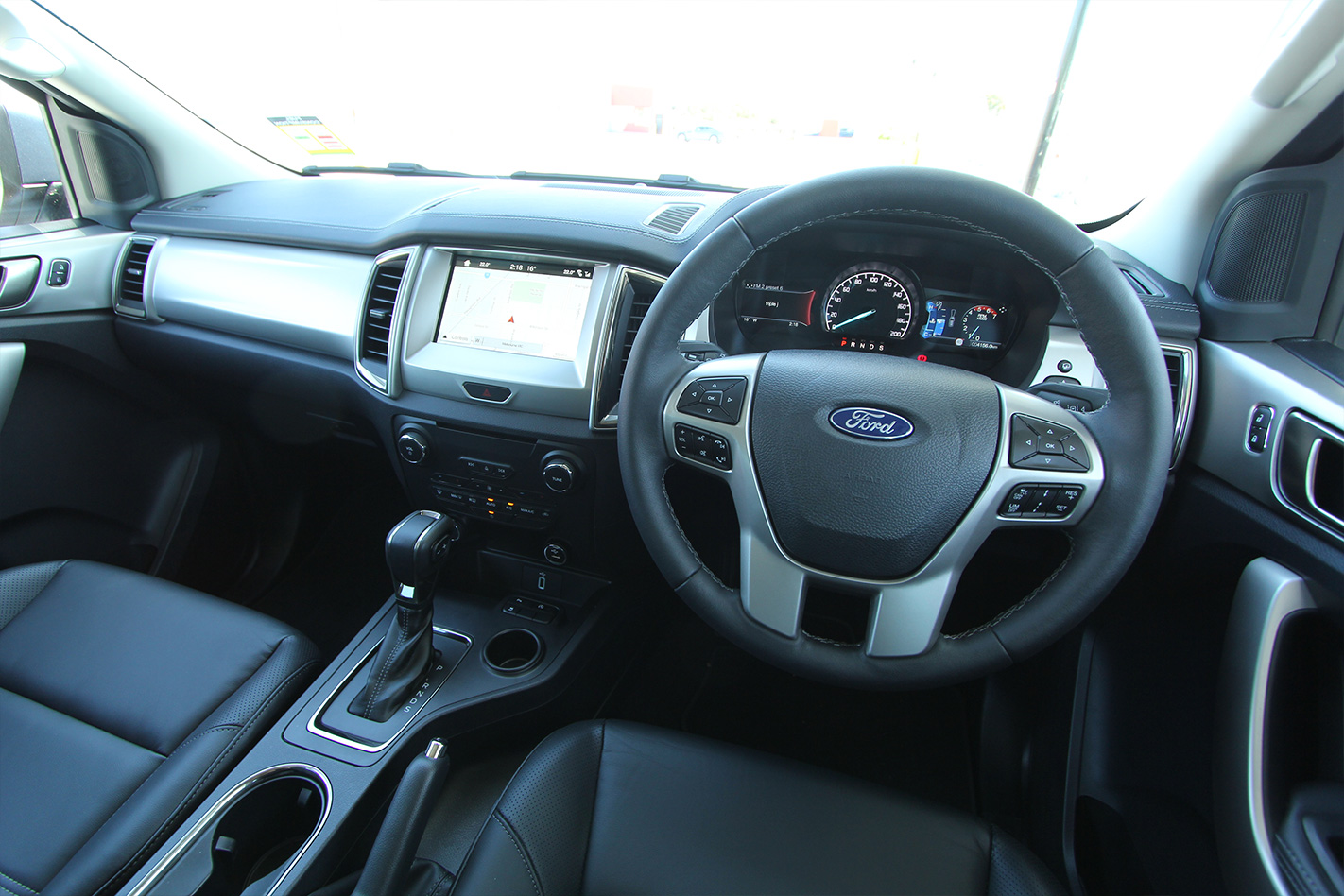
That’s all on top of the also-standard stability control, traction control, ABS, EBD, hill start assist and suite of seven airbags (including head-protecting curtain airbags that stretch all the way to the third row). Tested by ANCAP in 2015, the Everest achieved a five-star crash safety score.
COMFORT
It’s a comfy cabin, for sure. Having heaps of space definitely helps, and there’s decent legroom, headroom and elbow room across all three rows. Fitting three adults across the middle bench is also a viable option, and roof-mounted air vents mean everyone can enjoy fresh air – even if they’re in the back row.
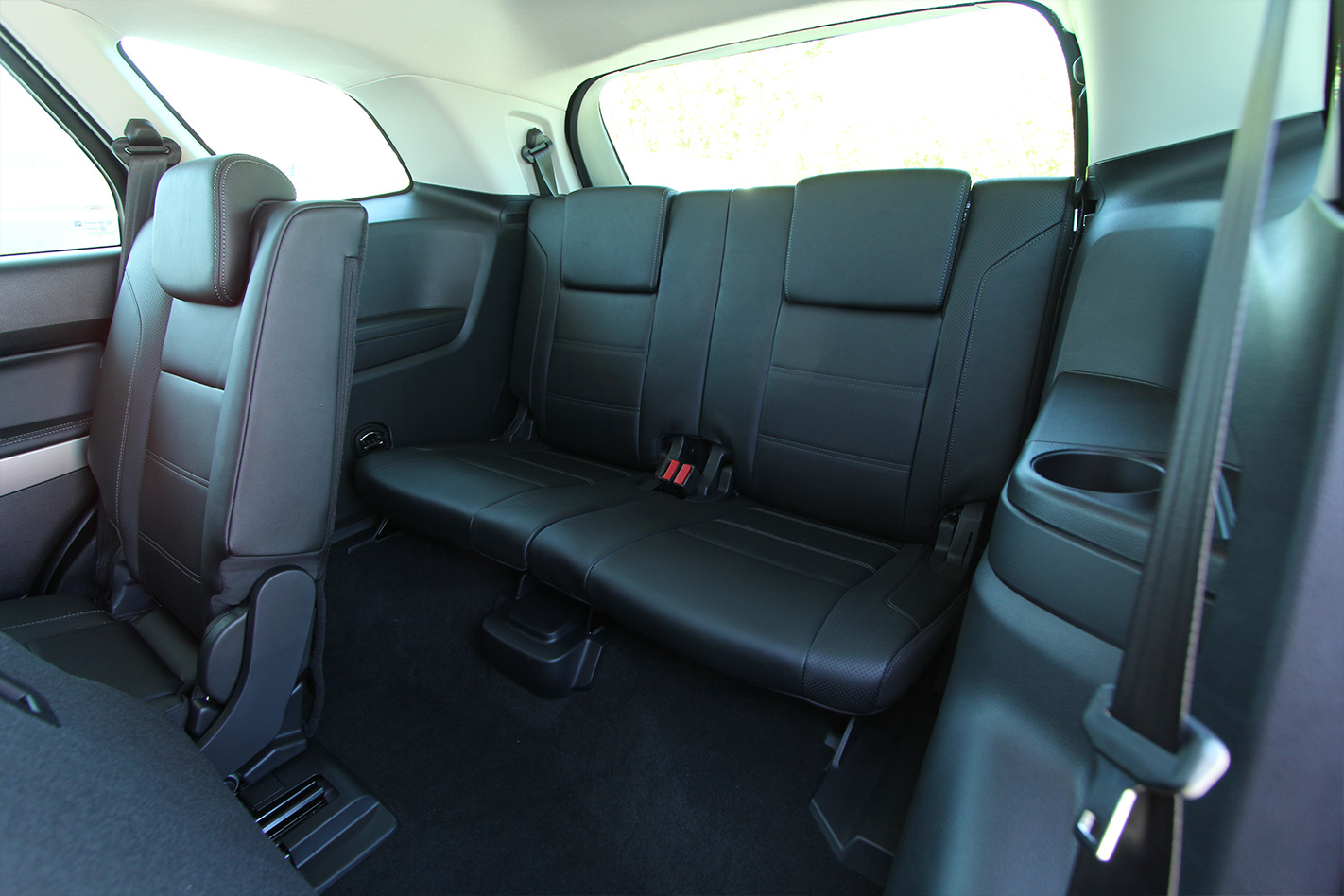
Even adults should feel reasonably comfortable in the last two seats, provided they’re not especially tall. As a family-friendly bus, the Everest has good credentials.
Ride comfort is also appropriate for this kind of vehicle, with cushy damping and a suspension that makes the most of the Everest’s significant wheel travel. It feels quite plush out on the highway, without being seasickness-inducing in its softness.
ON THE ROAD
Despite its 2.2-tonne kerb weight and Titanic dimensions, the Everest is actually quite an easy vehicle to pilot. The steering is finger-tip light yet feels well connected to the front wheels, while the elevated driving position and sizable wing mirrors make keeping an eye on your proximity to obstacles easy – on the off chance the parking sensors and rear camera didn’t pick them up first.
The big news for the 2019 model year is the addition of Ford’s 157kW/500Nm 2.0-litre twin-turbo diesel four-cylinder as a powertrain option, and while it’s 1.2 litres smaller and has one fewer cylinder than the Everest’s old 3.2-litre inline-five (which carries over as an optional engine), the four-cylinder has more power (14kW), more torque (30Nm) and can tow an extra 100kg (for a total of 3.1 tonnes).
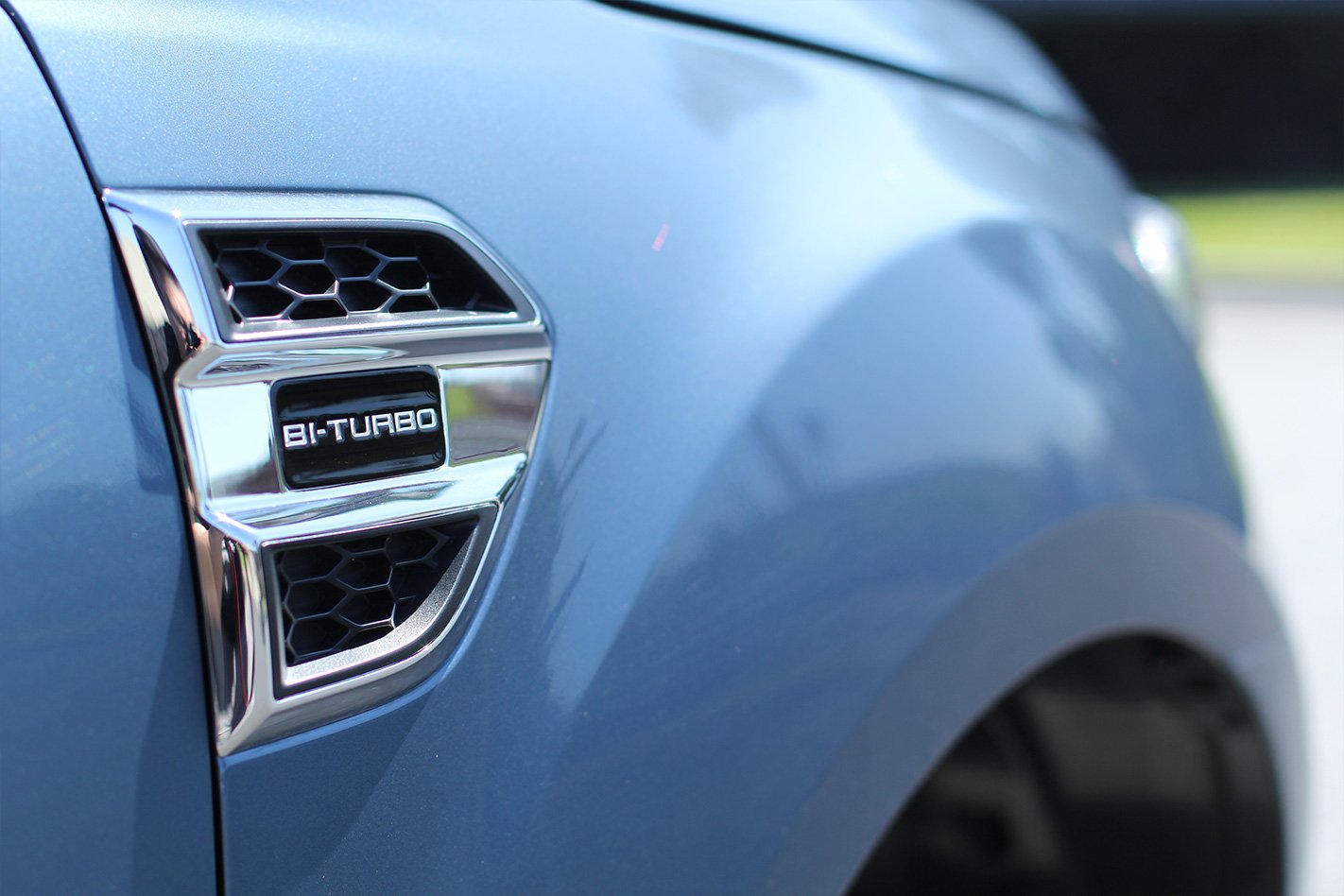
And from behind the wheel, it feels every bit as grunty as the spec sheet suggests. The torque band is spread wide across the rev range thanks to the engine’s twin-turbo setup, and even spirited acceleration doesn’t feel especially taxing for the two-litre. That performance is aided by the 10-speed automatic (another new addition for 2019), which has a broad spread of ratios that not only makes light work of around-town motoring, but gives it long legs for highway cruising. Family roadtrips in the Everest should be a relaxed affair – at least as far as the powertrain is concerned.
VERDICT
The only real notable shortfall with this particular Everest variant is the fact it doesn’t send power to the front wheels when all of its similarly-priced rivals do. That said, with many SUV buyers – even those jumping into hulking body-on-frame SUVs of the Everest’s size – rarely straying from the blacktop, Ford’s decision to offer the Trend in RWD as well as 4WD could be an astute one.
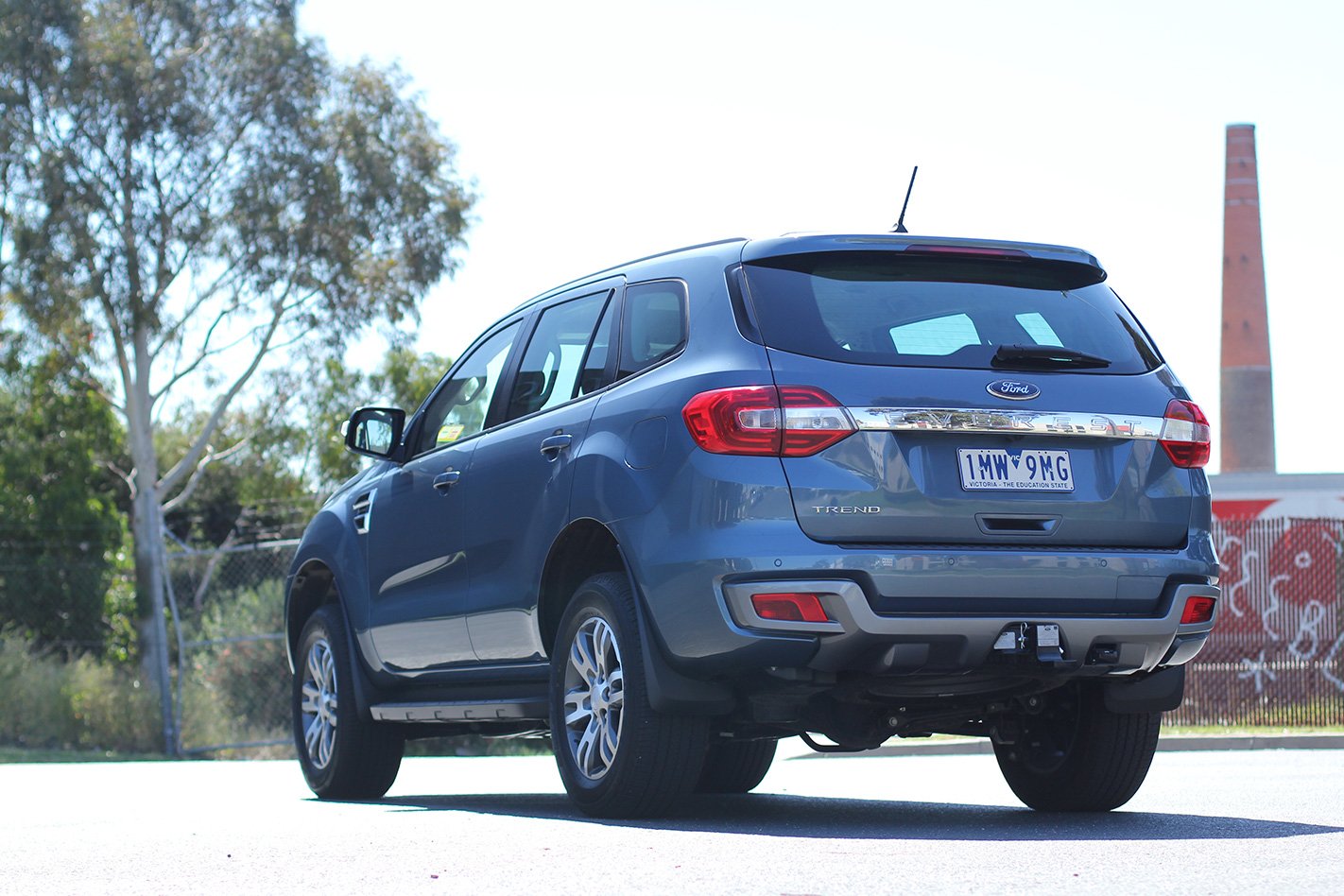
After all, there are likely plenty of buyers looking for a capable tow vehicle for their horse float, boat or camper, but don’t necessarily need the off-road traction (and the added weight, complexity and reduced fuel efficiency) of four-wheel drive. For those people, the Everest Trend RWD should hit the spot.



